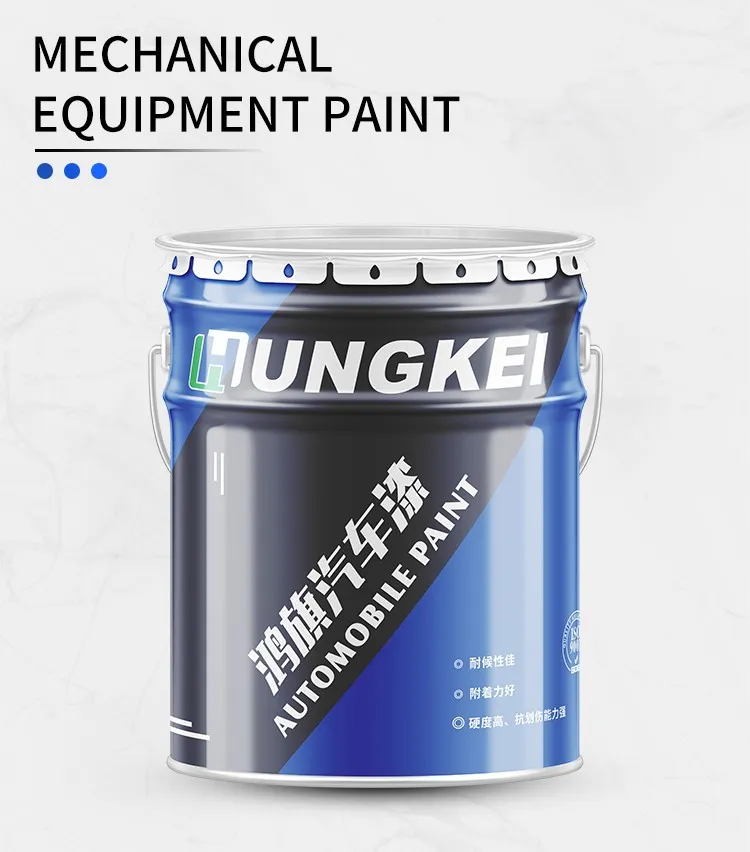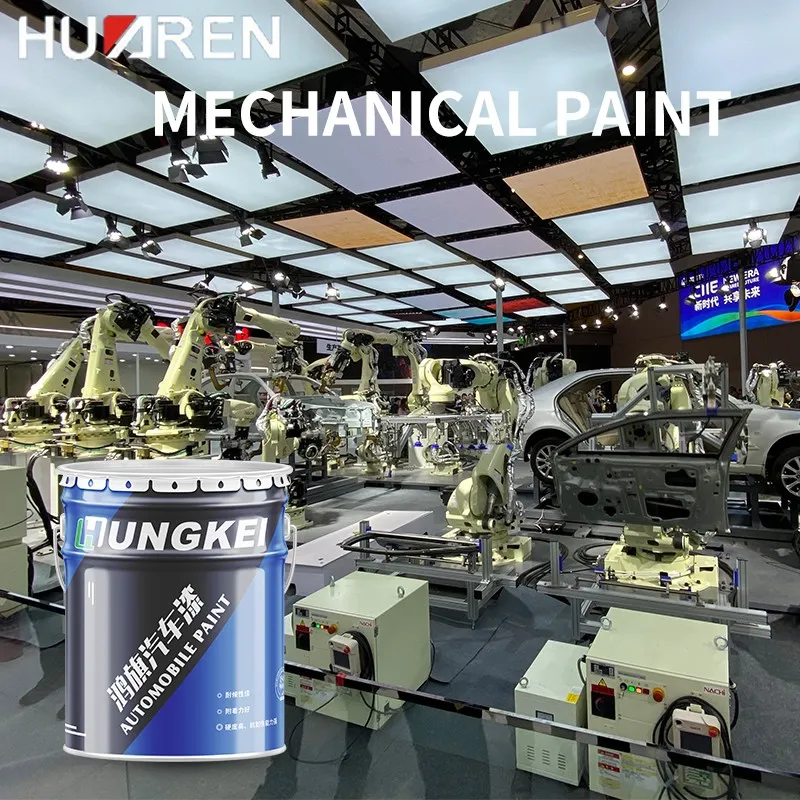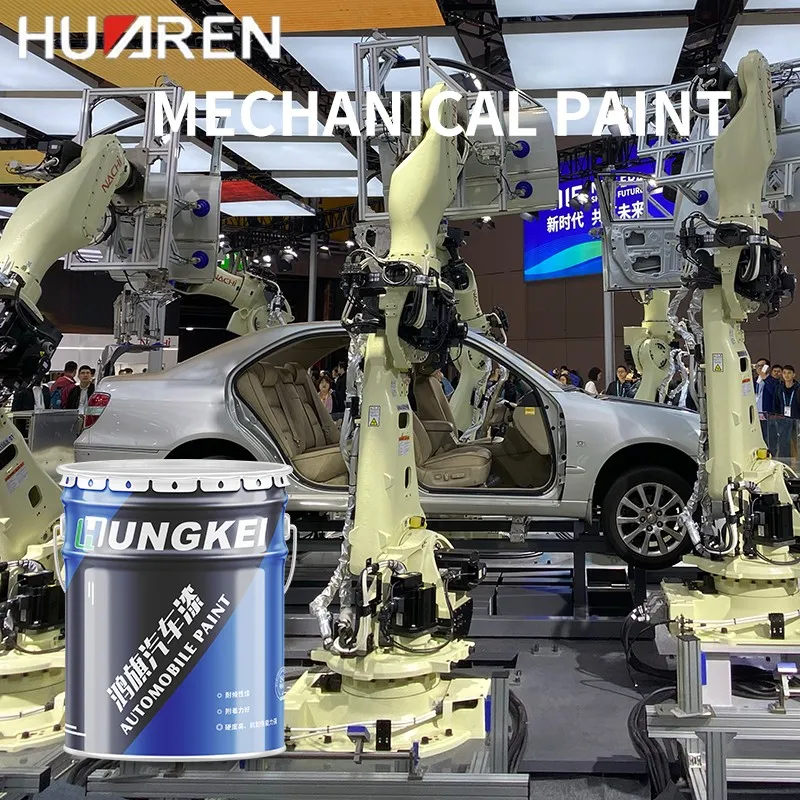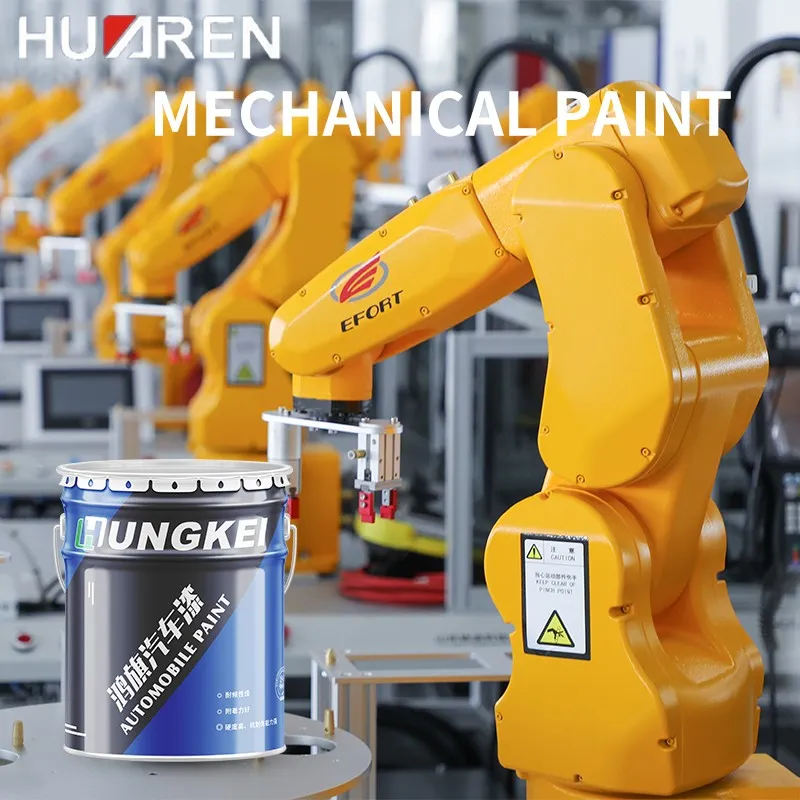In the paint industry, 2K acrylic paint is a topcoat with excellent performance and is widely used due to its excellent hardness, weather resistance and chemical resistance. However, many people will have a question when using this paint: Does 2K acrylic paint need a primer?
To answer this question, we need to have a deeper understanding of the characteristics of 2K acrylic paint, the role of primer and the coordination between the two.

What are the advantages of 2K acrylic paint?
Before answering whether a primer is needed, we first need to understand the characteristics of 2K acrylic paint. 2K paint refers to a two-component paint, where the "K" in "2K" represents the number of components, so 2K paint is a paint that can only be used after the two components are mixed. 2K acrylic paint is usually composed of acrylic resin and hardener. After mixing, a tough paint film is formed through chemical reaction.
The advantages of 2K acrylic paint include:
● High hardness and scratch resistance: The paint film formed by 2K acrylic paint after curing is very hard and can effectively resist scratches and impacts. It is suitable for occasions with high requirements for surface hardness.
● Excellent weather resistance: This coating has excellent weather resistance and is not easy to fade or chalk. It is especially suitable for outdoor equipment and vehicle coatings. It can effectively resist the erosion of environmental factors such as ultraviolet rays and rain.
● Strong chemical resistance: After curing, 2K acrylic paint has good chemical resistance and can withstand slight acid and alkali environments and common solvent contact.
● High gloss: The surface gloss of 2K acrylic paint is very high, which can provide a good decorative effect for the surface.
What is the role of primer?
Understanding the role of primer is crucial to determine whether primer is needed. Primer is usually applied to the initial surface of the substrate to enhance adhesion, improve corrosion resistance and improve the coverage of the topcoat. The main functions of primer include:
1. Enhance adhesion: Primer can provide a better adhesion surface, so that subsequent coatings can adhere more firmly to the substrate and prevent the topcoat from peeling off due to poor adhesion.
2. Improve corrosion resistance: Primer can effectively isolate air and moisture from direct contact with metal and other substrates to avoid rust or corrosion problems.
3. Filling surface defects: Primer also has a certain filling effect, which can cover small flaws on the surface of the substrate and make the topcoat effect smoother.
4. Improving color expression: Primer can improve the color saturation of the topcoat, especially when the substrate color is darker or lighter, the primer can provide a more uniform base tone.

Is it necessary to use primer for 2K acrylic paint?
Whether it is necessary to use primer depends mainly on the type and surface condition of the substrate. In some cases, the use of primer can help 2K acrylic paint perform better, while in other cases, primer may not be necessary. The use of primer will be more necessary in the following cases:
Is primer necessary if the substrate is metal?
For metal materials, the use of primer is usually necessary. Metal surfaces are usually smooth and easily corroded by air and moisture. Directly applying 2K acrylic paint may result in insufficient adhesion and easy rust. Therefore, metal primer can not only provide good adhesion, but also enhance the metal's corrosion resistance. This is especially important for metal parts that are exposed to the outdoors for a long time.
If the substrate is plastic or fiberglass, is primer still necessary?
Plastic and fiberglass surfaces generally have poor adhesion, so it is helpful to use a primer before applying 2K acrylic paint to such materials. Primers can improve the adhesion of 2K paint to these non-metallic surfaces. In addition, since plastic and fiberglass may shrink or expand due to environmental factors, primers can also buffer these changes to a certain extent, making the topcoat more durable.
If the substrate has been sprayed with old paint, is primer necessary?
If the old paint layer is intact and the surface has not fallen off, 2K acrylic paint can usually be applied directly over the old paint layer without the use of additional primer. However, the old paint layer should be sanded first to enhance the adhesion of the new paint and ensure that the 2K paint blends well with the old coating.

Do different types of primers have an impact on 2K acrylic paint?
Depending on the coating requirements and the type of substrate, different types of primers will produce different effects. Common types of primers include epoxy primers, acrylic primers, and polyurethane primers, each of which has its own characteristics and is suitable for different occasions.
Are epoxy primers compatible with 2K acrylic paints?
Epoxy primers are known for their excellent adhesion and corrosion resistance, especially for metal substrates, and have good weather resistance. 2K acrylic paints can cover epoxy primers well, forming a two-layer coating system with high weather resistance and corrosion resistance.
Is acrylic primer suitable for 2K acrylic paint?
Acrylic primers and 2K acrylic topcoats have certain similarities in chemical composition and can be used well together. For indoor use or outdoor facilities with less severe corrosion environments, acrylic primers are an economical and practical choice.
Are polyurethane primers compatible with 2K acrylic paints?
Polyurethane primers have excellent waterproof properties and weather resistance and are usually used in places that need to withstand harsh environments. Polyurethane primers can provide a solid foundation for 2K acrylic paints, making the coating more durable. Therefore, in areas such as ships and bridges that have high requirements for corrosion resistance, the combination of polyurethane primers and 2K acrylic paints is a common combination.
What impact will the use of primers have on the effect of 2K acrylic paints?
The use of primer can not only improve the adhesion of 2K acrylic paint, but also affect its surface effect, as follows:
● More uniform color effect: Primer can fill the color difference on the surface of the substrate, avoid the color difference of the topcoat caused by the different colors of the substrate, and make the color of the coating more uniform.
● Smoother surface: Primer can fill tiny scratches or dents, making the surface after the topcoat is applied flatter and smoother, enhancing the decorative effect.
● Improve UV resistance: Some primers have UV resistance, which can further enhance the weather resistance of 2K acrylic paint.
● Extend service life: Because primer can effectively reduce the loss of topcoat, the coating as a whole is more solid, thereby extending the service life of 2K acrylic paint.

What potential problems will not use primer bring?
If you choose to use 2K acrylic paint directly without primer, you may encounter some potential problems:
1. Insufficient adhesion: Some substrates (such as metal, plastic, etc.) have smooth surfaces, and 2K acrylic paint may not have enough adhesion when applied directly on them, resulting in easy peeling of the topcoat later.
2. Corrosion issues: Primers can provide basic anti-corrosion protection, while directly applying 2K acrylic paint on metal surfaces may cause the coating to lose its protective effect and increase the risk of corrosion.
3. Obvious surface defects: Without the filling effect of primer, the defects on the surface of the substrate may be more obvious, affecting the aesthetics of the final coating effect.
4. Uneven color: Directly applying 2K acrylic paint on darker or lighter substrates may cause uneven color.

